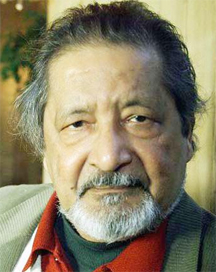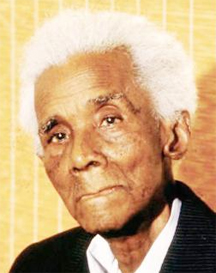Today is celebrated as the Chinese New Year which ushers in ‘the year of the snake,’ a year in which Guyana commemorates the 160th anniversary of the arrival of Chinese in Guyana. As the nation and the Caribbean reflect on the Chinese presence, the cultural heritage of a people and their contribution to what is supposed to be the one unified multi-ethnic society, one recalls the baker’s story.
It is narrated by the baker who describes himself as “black as the Ace of Spades and ugly to match.” He lived in Trinidad and grew up in a colonial society where to be black was to be disregarded, stereotyped and unprivileged. “Black and ugly” was a standard curse in the national aesthetics, the racial, social and economic hierarchy. He could not enter most houses and buildings through the front door as his place was as a servant, a menial and not a social equal, and so he was condemned to entering from the back door. Naturally, he struggled to make a living and survive.
 He discovered, however, from working in bakeries, that he had one serious talent. He could bake. He was a master of the occupation although, as a worker, he was gaining nothing from it, and the Chinese bakers who employed him would never allow him to be seen in the front of the bakery. So, as a good Christian, he sought inspiration from God. He prayed and God answered him briefly, saying “Young Man, just bake bread.” He took that very literally and decided to open his own baker shop. He was an expert baker; his bread was good, but business was bad. He toiled but very few people would come to buy. On the point of giving up in despair, he appealed to God again, but the Lord would only say “Young Man, you just bake bread.”
He discovered, however, from working in bakeries, that he had one serious talent. He could bake. He was a master of the occupation although, as a worker, he was gaining nothing from it, and the Chinese bakers who employed him would never allow him to be seen in the front of the bakery. So, as a good Christian, he sought inspiration from God. He prayed and God answered him briefly, saying “Young Man, just bake bread.” He took that very literally and decided to open his own baker shop. He was an expert baker; his bread was good, but business was bad. He toiled but very few people would come to buy. On the point of giving up in despair, he appealed to God again, but the Lord would only say “Young Man, you just bake bread.”

Sadly, he wandered around aimlessly, observing other tradesmen and sellers until it struck him that there were strict racial divisions and specialisations among them. Who sold water coconuts? People only bought doubles from Indians; which race sold cloth and textiles? He pursued the matter until someone told him “nobody don’t buy bread from a black man. Which black man you ever see running a bakery? All the bakeries are Chinese.”
So he set up his bakery again, but this time he stayed out of the shop. He now realised why his previous Chinese bosses would compel him to enter the bakery only from the back. He hired a local Chinese boy to stay in front and sell, even throwing a few Chinese newspapers casually but visibly around for people to see even though the boy couldn’t read the language. He himself kept out of sight, just baking the bread and always entering the bakery from the back.
He put up a sign, got an artist to paint on a few meaningless characters that looked like the Chinese language along with the bold name “Yung Man Bakery.” He prospered (after all, he baked good bread). His business thrived and he smiled every time he went to the bank – always entering from the front.
‘The Baker’s Story’ is by one of the masters – VS Naipaul – and it appears in the collection A Flag on the Island. It is to be noted the way Naipaul plays on race and racial stereotypes in the story, and that it is one of those works which treats the Chinese presence in the Caribbean. It is more complex than it appears, and is actually one of the better works of fiction that touches on this subject in West Indian literature. But it points to a number of significant factors in this literature – a minority literature in the region.

There are two main waves of Chinese immigrants in the Caribbean: those who first came as indentured workers in the sugar industry in the nineteenth century, and the current wave of those seeking economic opportunities. The former have made an impact and have contributed to the cultural heritage, while the latter have indeed made an impact but are yet to approach any form of integration and are still culturally very exclusive. Writers have treated the old group, but apart from some satirical attention on stage, they have not yet caught up with the new.
Today’s celebration of the Chinese New Year will find a good deal of positive influences and contributions to the national cultural heritage of this particular Oriental presence. These include the great popular contribution to the cuisine, to trade and commerce, technology and manufacturing, and to sport – especially hockey, table tennis, and squash. But few would look to literature to find this heritage. Guyana can name two relevant writers: Meiling Jin who wrote The Song of the Boatwoman and Other Stories and established novelist Janice Lowe Shinebourne of Chinese and Indian extraction who wrote the novel Chinese Women. Poet Brian Chan reflects nothing of the heritage.
Shinebourne’s novel (her most recent) goes back to the social background in the post-plantation communities in Berbice touching on class and race relations. But it is a somewhat post-modernist narrative told by the hero who, from his Berbice background was possessed by a fascination for Chinese women. The novel is about his pursuit of one of them and his encounters in Guyana and many years later in England. It is very much a work of narrative point-of-view which makes the narrator-hero very elusive and untrustworthy. In fact it is more than hinted that he spent many years in the Middle East and was secretly working as a world terrorist. This takes the focus a bit away from the Caribbean Chinese heritage.

The West Indian literature of the Chinese presence tends to reflect the way the people in the society perceive the Chinese, and it is replete with racial stereotypes, most of which are not particularly positive. Up to this day East Indians, for example, are often associated with the sugar estate, but none of the works place the Chinese immigrants in that context. They are presented in post-indentureship and post-plantation social images according to the occupations that they followed after leaving the estates. These occupations have led to the repeated instances of stereotyping.
Many developed nations in the world boast about their accommodation of immigrants and the multicultural nature of their societies, despite the ongoing complaints of ‘othering‘ and discrimination against these minorities in the same countries. London, Canada, New York, all boast about multiculturalism as a positive make-up of their societies. Guyana, however, in spite of the national slogan and the reality of many ethnic cultures is yet to come to terms with and accommodate social plurality. This comes out in the images in literature in Trinidad and (to a lesser extent) in Guyana. Dramatist Raymond Choo Kong, of Chinese descent, satirised the tendency to stereotype the Orientals in a comic revue on stage in Port of Spain in 2010.
The Backyard Movement in drama, and the literature of the whole range from the 1930s to the 1970s present many pictures of the Chinese as shopkeepers, gamblers, opium consumers and smugglers, and as steeped in commerce to the point of being exploitative. This is the image in Michael Anthony’s novel The Games Were Coming in which the Chinese shopkeeper and dry goods merchant displayed another vice typical of these stereotypes. He was a sexual exploiter of female employees as they are of customers in other works. These reflect the way popular society perceived these people in the Guyanese kwe kwe tradition. The kwe kwe chastises errant behaviour in the community and tries to instruct and warn females about sexual misconduct. There are songs in this tradition in which the predators against whom the girls are warned are Chinese shopkeepers who will exploit them sexually.

The collection of writers led by CLR James, Albert Gomes and Ralph Duboissier, among others known as the Beacon group, advanced social realism in local fiction in Trinidad and Tobago in the 1930s. One short story published in The Beacon magazine that they produced is ‘Her Chinaman’s Way’ about a young woman living with a Chinese shopkeeper who found out that he was an opium smuggler. In one of the many intrigues of the plot she tips off the police about a shipment of opium and her ‘husband’ pays her back by killing their baby, in whom he had never really taken an interest. While the story reveals the outcome of cultural differences and the fact that the woman never really understood the Chinese ‘culture‘ in Trinidad, it pictured a ‘typical’ business-minded, vindictive Chinese gambler and opium smuggler.
However, some writers are more subtle and provoke broader considerations, such as Naipaul and Sam Selvon. In the novel A Brighter Sun Selvon begins by presenting, as usual, the Chinese shopkeeper. But this one, called Tallboy by the villagers, is anything but typical. He is a positive force in the plot and is very helpful to the hero Tiger, struggling to understand what it is to be a husband and “a man.” There is humour and irony; Tiger was taught by his society that only sons are important, not “girl children.” But while he couldn’t seem to have any, Tallboy and his wife kept getting son after son. Quite atypically, the Chinese Tallboy played a role in teaching Tiger and was a character foil for the hero as he learned.
It is the same in Naipaul’s ‘The Baker’s Story’ in which the author uses the racial stereotyping to challenge the norms of Trinidadian society and laugh at them ironically. He plays upon the superficiality and ridicules the popular beliefs, even to the very ironic and metaphorical way in which the narrator executes a playful pun in the way he turns God’s paternal address “Young Man” into the Chinese-sounding name “Yong Man.” It is among the best examples of the treatment of the Chinese heritage in the literature.





